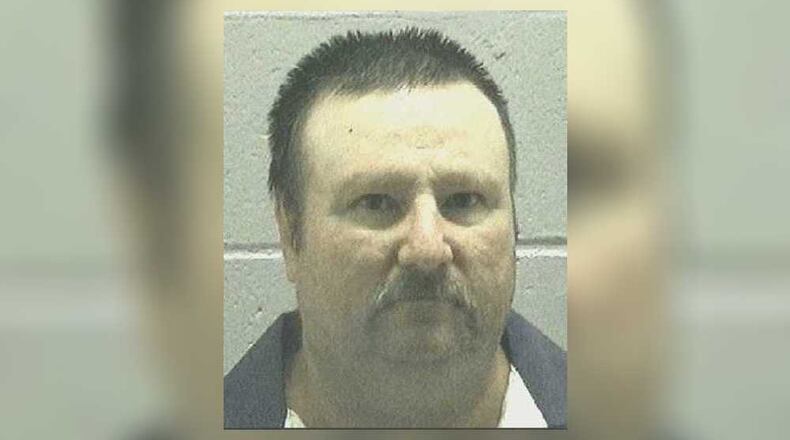A Glynn County judge on Wednesday denied DNA testing of a murder weapon that lawyers for condemned inmate Jimmy Meders contend will show he did not commit the crime.
Superior Court Judge Stephen Scarlett, at the close of a two-hour hearing, rejected the request. Even if DNA testing had been available at Meders' 1989 trial, and its results had been favorable to Meders, it would not have resulted in his acquittal, the judge said. The recent request was too late and was made to try to delay Meders' execution, which is scheduled for Jan. 16, Scarlett said.
“There’s still overwhelming evidence of his guilt,” the judge said of Meders. And DNA testing of a handgun, like the Dan Wesson .357 Magnum used in the crime, “has been available for some period of time.”
Meders, a 58-year-old former National Guardsman, was sentenced to death for the October 1987 murder of convenience store clerk Don Anderson during a pre-dawn armed robbery in Brunswick. Prosecutors said when Johnson opened the cash register, Meders fatally shot him in the chest and then the head.
Police later found “bait money” — cash put in the register to catch robbers — inside Meders’ coat pocket. An initial police search of Meders’ home did not find the murder weapon. But after prosecution witness Randy Harris told police he understood Meders hid the weapon under his waterbed, a second search found it there.
Harris also testified at trial that, not long after the shooting, Meders told him, “I just blowed a man’s head off over $38.”
Meders' legal team said it wants the DNA testing to see if two other men — Bill Arnold and Greg Creel — handled the murder weapon. At trial, Meders testified that Arnold was the one who killed Johnson and said Creel had handled the weapon as well.
Because both men were key prosecution witnesses against Meders and both denied knowing Meders had the gun that night, their credibility would be undermined if tests were to find their DNA on the weapon. Meders’ lawyers also want to know whether Harris, who is Arnold’s cousin, handled the gun as well to see if he planted it under Meders’ waterbed.
“This is about basic fairness,” Southern Center for Human Rights lawyer Mike Admirand told Scarlett. “We have a man who is about to lose his life in eight days. This testing can be done in a matter of weeks.”
Meders will appeal Scarlett’s decision to the Georgia Supreme Court, said Admirand, who is a member of Meders’ legal team.
DNA expert Mark Perlin testified that testing of the handgun, which is in evidence one floor below the courtroom, could be done in two weeks. When asked how long it would take to compare those results with DNA taken from Arnold, Creel and Harris, Perlin said it would happen “almost instantaneously” when they’re entered into the computer system.
Perlin developed True Allele, a genotyping software that allows examiners to identify multiple DNA sources when there’s a mixture of them on a surface. Because the .357 Magnum used in the crime had a rough grip, it more likely caught DNA from whoever handled it, he said.
Perlin said he cut short a trip to the Middle East to fly 25 hours to get to Brunswick for the hearing. “In this case, DNA may be a life or death decision,” he said.
But Senior Assistant Attorney General Sabrina Graham reminded Perlin that “touch DNA” testing has been available for years.
“Couldn’t it have been tested several years ago?” she asked.
“If people had known about it,” Perlin answered. “Most lawyers had never heard of it.”
RELATED:
» Condemned man's children call for DNA tests
» DNA analysis frees Ga. man wrongfully convicted of rape after 18 years
Perlin noted that DNA evidence from his True Allele software was only admitted into evidence for the first time in Georgia in the past year. It was first taught to GBI crime lab scientists, who now use the technology, in 2018.
Attorney Jim Jenkins, who aggressively represented Meders for 30 years before the Southern Center for Human Rights took the case in September, said he had been unaware of the True Allele breakthrough.
“If I had known DNA evidence could have been taken in this situation … I would have tried to do it,” he said.
About the Author
The Latest
Featured




